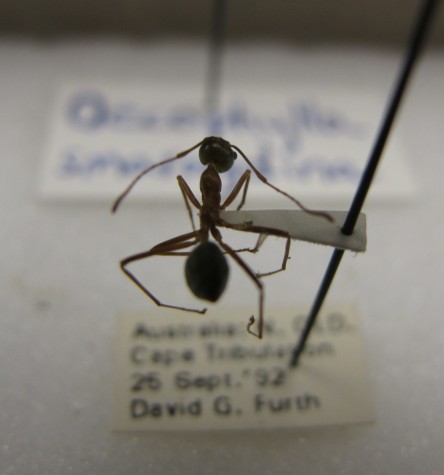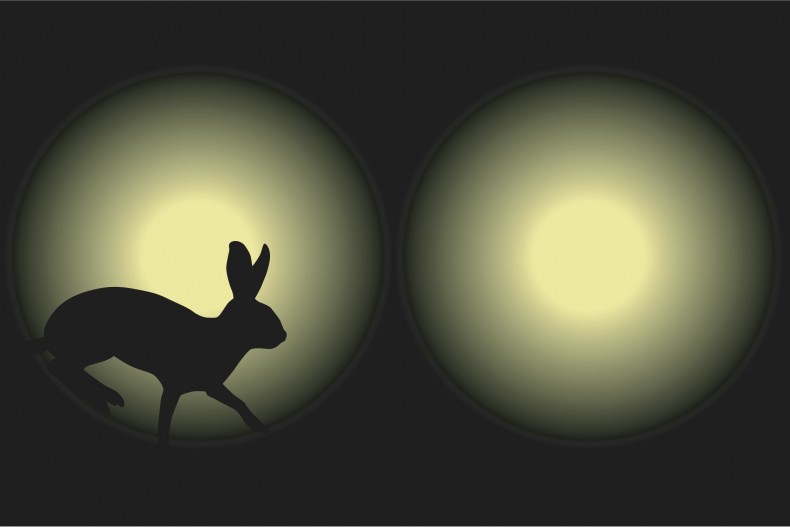This post originally ran winter of 2014 and circumstances have not changed. Careful out there!
There’s been a lot of road kill on my drive to work and back in Western Colorado, mostly prairie dogs and rabbits, and young magpies trying to learn how fast they have to fly to get out of the way. I find myself slowing and dodging for the live ones who continue shooting across my path like meteorites, or those who congregate near the yellow line, scattering in all directions at the last second.
The automobile is an act of violence. Never mind the incredible human toll taken by accidents where in the US about 100 people are killed every day, a whole other class of fatalities exists among those who aren’t even signed onto this culture of speed.
Stains and scraps of animal remains I race past every day leave me thinking about the ease of extinction, how even our rudimentary task of transportation leaves trails of entropy. Cottontails and prairie dogs, at least in my rural neighborhood, are not at risk of extinction, but a debt is being accrued.
Conservation biologist Michael Soule once told me, “Humanity is nature’s instrument to commit suicide.”
I realize it’s not a pleasant subject, probably not why you are flipping through blogs today, but I can’t get road kill out of my head. Every lost life I try not to hit with my tires, avoiding adding insult to inanimate injury, becomes a thousand more, and then millions, with humans at the wheel. Upper estimates see global loss somewhere between 18,000 and 140,000 individual species a year. Low estimates are between 200 and 2,000 species annually. Either way, we appear to be smack in one of the largest destructive events in earth’s history, with human-driven habitat fragmentation and our assistance in the global spread of invasive species as the leading cause. Rarely have mass extinctions in the past, of which there have been five, been sudden. Even the dinosaurs didn’t go by Chicxulub alone, fossil diversity on its way down to begin with, not to mention atmosphere-scrubbing basalt floods that occurred hundreds of thousands of years after the asteroid impact. Extinctions happen step by step, road by road.
A few years ago I had the privilege of sitting with biologist Edward O. Wilson at his office inside the Museum of Comparative Zoology at Harvard University. On a couple of occasions we had lunch together, our conversations rambling across islands and forests around the world. I was trying to get a fix on the mechanisms and reality of current extinctions, and Wilson was the person to talk to.

“You know, this notion that we’re just another agent of extinction, people are doing their part extinguishing species like great storms or droughts?” Wilson said as we ate our sandwiches in a space decorated with bones and mounted insects. “We’re moving from a thousand to ten thousand times the rate of extinction removal than before we came along. Another notion is that there are species that have just grown old, and like old folks, you’ve got tot let them go; you can’t be spending large amounts of money trying to keep them alive, so pull the plug, let them die gracefully. That’s a fallacious analogy made between a person and a species. All species consist of you, vigorous, healthy individuals. You go find a species right on the brink of extinction, and you’re always astonished. They’re young, healthy, vigorous. It’s just that they’re not being replaced because there’s no place for them to breed, or because they’re being shot out, or because there’s not enough food for the young, or there’s a bad new predator introduced. But when you look at the individuals themselves, what the species really is, they are just as ready to breed and spread as a species that covers half the continent. There’s no difference.”
Just getting to Wilson’s office, you have to walk through the suspended skeletons of whales, and glass cases holding the eerie remains of birds, primates, and glass jars with macabre, many-appendaged forms of invertebrates. It is beautiful, really, a profusion of life before you, the incredible grandeur of what evolution has wrought. It brings to mind Origin of the Species, and Darwin’s famous quote, “There is grandeur in this view of life, with its several powers, having been originally breathed into a few forms or into one; and that, whilst this planet has gone cycling on according to the fixed law of gravity, from so simple a beginning endless forms most beautiful and most wonderful have been, and are being, evolved.”
Those forms are audible when you hit them with your car. The smaller ones, the rabbits, squirrels, prairie dogs, are no louder than hitting a rock wrapped up in a cloth. Magpies burst into black and white. I’ve just been trying to get to work along with everyone else, doing what my life tells me to do, countless tasks and inventions of the day, hoping that the entropy spooling out on the road behind me is somehow overcome by the creation I’m racing into.
Images: Shutterstock/Craig Childs

I was grateful that good brakes and the sturdiness of the species kept me from being an agent of–well, it’s not homicide; “cervucide”?–earlier this year when a deer, presumably a doe, ran out just in front of my new Forester, and she all but disappeared beneath the horizon of the hood, and I heard and felt the bump, and skinny, awkward legs went rolling and thrashing down the road. I pulled off immediately to assess the damage to deer and car. By the time I was out of the car, the deer was back up. She stood and gave me the stink-eye for a few seconds, then walked off into the dark. I did not notice any limp.
It was the next day before I found that there was damage to the car after all, and over a month before I realized its full extent. I hope (and suspect) the deer fared better.
Two Thoughts:
I hope Steve is right about his deer collision, but given what I know about deer physiology and anatomy… I fear he is fooling himself. There was almost certainly fatal internal damage.
On Wilson’s comments on the misleading good health of individuals in endangered populations: Sometimes it’s true, but in other cases, such as behavior, vigor, and health in large, long-lived individuals such as trees and elephants, you can observe the visible effects in breeding age individuals.
Thirty-four years ago, Canyon Under Siege worked with/for the Havasupai Tribe to stop Energy Fuels Nuclear, a Denver uranium mining company, from sinking a breccia pipe mine into what the Havasupai know to be the belly of the Mother – the belly of the earth and the birth place of their twelve month repeating life cycle. The tribe hosted a four day feast and ceremony near a little butte that can remain nameless. We ate and danced. We ran races. We ducked under the junipers around the sage meadow to escape the high desert sun.
Pretty groovy and lyrical, huh?
The price of uranium dropped and the area stayed un-raped till three years ago: https://www.theguardian.com/environment/2017/jul/17/grand-canyon-uranium-mining-havasupai-tribe-water-source
Back in the days of feasting and dancing and racing and praying, four white folks went up into the junipers around Solstice. We hunkered down on the red earth. Each of us said or didn’t say what we wished we could give to that Place. I pressed my hands on the ground and thought: “What do you need from us humans?” Almost immediately, one word came into my mind: “STOP”. Now, after years of not stopping – me and my species – here we are. Tomorrow, I’ll drive into town on a pine-shaded little dirt road. I’ll stop and talk to the moon. I’ll get back in the car and drive some more. And, more the next day. And, more. That makes me culpable. That makes me a killer. I don’t know how to stop.